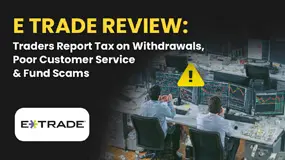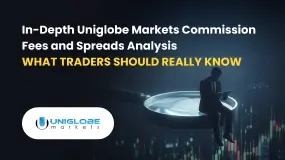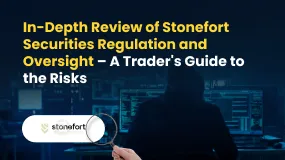简体中文
繁體中文
English
Pусский
日本語
ภาษาไทย
Tiếng Việt
Bahasa Indonesia
Español
हिन्दी
Filippiiniläinen
Français
Deutsch
Português
Türkçe
한국어
العربية
Funded Trader Success Rates Exposed: Much Tougher Than You Think
Abstract:High profits with no risk? Funded trading programs might seem appealing, but the reality is brutal. Find out why only a tiny fraction of traders actually succeed.

In recent years, funded trader programs have gained immense popularity among aspiring forex traders. These programs offer a seemingly attractive opportunity: trade with large capital without risking your own money. On the surface, it appears to be a win-win situation, as traders only need to prove their skills through a challenge to secure funding from a proprietary trading firm (prop firm).
However, the reality is far from glamorous. Behind the promises of capital and potential profits lie strict rules, high upfront costs, and daunting success rates that traders must navigate. Understanding how these programs actually work and the real chances of success is crucial for anyone considering joining.
The Real Rules of the Game
The basic concept of a funded trader program is that traders pay an entry fee to participate in a challenge or evaluation. These fees vary widely, from as low as $50 to over $1,000, depending on the funding level and trading capital offered. Generally, higher entry fees correspond to larger funding opportunities.
Traders are typically given a simulated trading account to demonstrate their ability to meet profit targets while adhering to stringent risk management criteria. These criteria often include:
• Profit Targets: Achieving a specific percentage gain, often ranging from 5% to 10% within a set period.
• Drawdown Limits: Maintaining losses below a specified percentage, typically around 5% to 10%.
• Time Constraints: Completing the challenge within a defined timeframe, often 30 to 60 days.
What makes the challenge even tougher is that some programs have multi-stage evaluations. Traders might pass the first round only to face an even stricter second round. Success at both stages is required to secure a funded account.
High Fees, Low Rewards
One of the most overlooked aspects of funded trader programs is the sheer cost involved. Entry fees can add up quickly, especially if a trader repeatedly fails challenges and has to reapply. Moreover, even successful traders often find that the payout ratios are not as lucrative as they initially seemed.
In many cases, firms offer profit splits ranging from 50% to 80%, but the reality is that only a small percentage of traders ever see those profits. Even after securing funding, maintaining the account is another challenge, as traders must consistently meet profit targets without exceeding drawdown limits.
Success Rates: The Grim Reality
Despite the attractive prospects, the truth is that very few traders actually succeed in funded programs. Industry data reveals that pass rates for initial evaluations range from 5% to 10%. However, even among those who do secure a funded account, maintaining profitability is a daunting task.
According to aggregated statistics, only about 20% of funded traders receive any payouts at all, and only 1% to 2% of total participants ultimately make money. This means that out of 100 traders who start the process, merely one or two will see actual returns.
Additionally, some traders report waiting months or even years to receive their payments, as firms often delay payouts due to “administrative” or “evaluation” issues.
Final Thoughts: Know What You‘re Getting Into
While the idea of trading with someone else’s capital sounds appealing, the reality is that the pathway to profitability is riddled with obstacles. With high entry fees, low success rates, and unpredictable payouts, aspiring traders must weigh the risks carefully before committing.
Before diving into any funded trader program, take the time to research the firm, read reviews from real users, and understand the payout structure. Only by approaching the challenge with realistic expectations and diligent preparation can you improve your chances of success.
Disclaimer:
The views in this article only represent the author's personal views, and do not constitute investment advice on this platform. This platform does not guarantee the accuracy, completeness and timeliness of the information in the article, and will not be liable for any loss caused by the use of or reliance on the information in the article.
Read more

E TRADE Review: Traders Report Tax on Withdrawals, Poor Customer Service & Fund Scams
Has your E Trade forex trading account been charged a withholding tax fee? Did your account get blocked because of multiple deposits? Did you have to constantly call the officials to unblock your account? Failed to open a premium savings account despite submitting multiple documents? Is fund transfer too much of a hassle at E Trade? Did you find the E Trade customer support service not helpful? In this E Trade review article, we have shared certain complaints. Take a look!

mBank Exposed: Top Reasons Why Customers are Giving Thumbs Down to This Bank
Do you find mBank services too slow or unresponsive? Do you find your account getting blocked? Failing to access your account online due to several systemic glitches? Can’t perform the transactions on the mBank app? Do you also witness inappropriate stop-level trade execution by the financial services provider? You are not alone! Frustrated by these unfortunate circumstances, many of its clients have shared negative mBank reviews online. In this article, we have shared some of the reviews. Read on!

In-Depth Uniglobe Markets Commission Fees and Spreads Analysis – What Traders Should Really Know
For experienced traders, the cost of execution is a critical factor in broker selection. Low spreads, fair commissions, and transparent pricing can be the difference between a profitable and a losing strategy over the long term. This has led many to scrutinize the offerings of brokers like Uniglobe Markets, which presents a tiered account structure promising competitive conditions. However, a professional evaluation demands more than a surface-level look at marketing claims. It requires a deep, data-driven analysis of the real trading costs, set against the backdrop of the broker's operational integrity and safety. This comprehensive Uniglobe Markets commission fees and spreads analysis will deconstruct the broker's pricing model, examining its account types, typical spreads, commission policies, and potential ancillary costs. Using data primarily sourced from the global broker inquiry platform WikiFX, we will provide a clear-eyed view of the Uniglobe Markets spreads commissions prici

In-Depth Review of Stonefort Securities Regulation and Oversight – A Trader's Guide to the Risks
For experienced traders, the process of selecting a new broker transcends a simple comparison of spreads and leverage. It is a meticulous due diligence exercise where the integrity of the broker's regulatory framework is paramount. Stonefort Securities, a relatively new entrant in the crowded brokerage space, presents a complex and often contradictory profile. On one hand, it boasts a modern MT5 platform and a stream of positive user testimonials. On the other hand, it is shadowed by severe regulatory warnings that question the very foundation of its operations. This in-depth review focuses on the core issue for any long-term trader: Stonefort Securities regulation and oversight. We will dissect the broker's corporate structure, scrutinize its licensing claims, and analyze what the data implies for trader protection and fund security. For traders evaluating whether Stonefort Securities is a trustworthy partner, understanding these details is not just important—it is essential.
WikiFX Broker
Latest News
WikiFX's New Evaluation of ATM Capital LTD: Does its License Protect the Arab Investor?
How a Fake Moomoo Ad Led to the “New Dream Voyage 5” Scam
Is Axi Legit? A Data-Driven Analysis of Its Regulatory Standing and Trader Feedback
Trive Investigation: High Score, Hidden Risk - The Profit Paradox
In-Depth Uniglobe Markets Commission Fees and Spreads Analysis – What Traders Should Really Know
FXPesa Review: Are Traders Facing High Slippage, Fund Losses & Withdrawal Denials?
CMC Markets Australia Revenue Surges 34%, But High-Net-Worth Clients Face Tax Phishing Threat
Bessent believes there won't be a recession in 2026 but says some sectors are challenged
mBank Exposed: Top Reasons Why Customers are Giving Thumbs Down to This Bank
Young Singaporean Trader Grew USD 52 into a USD 107,700 Portfolio
Currency Calculator



